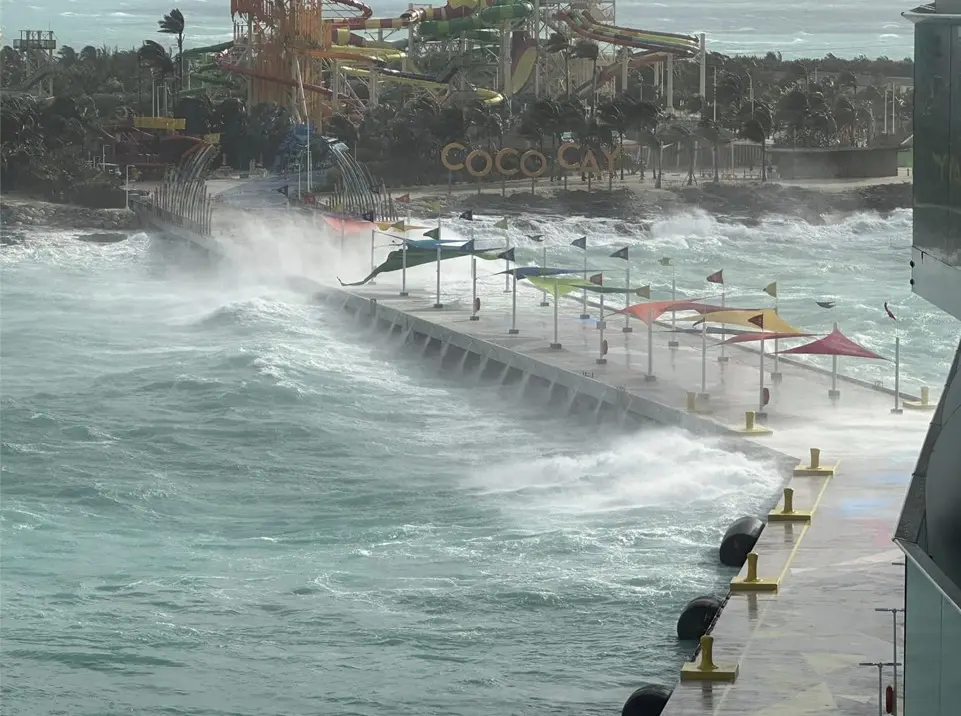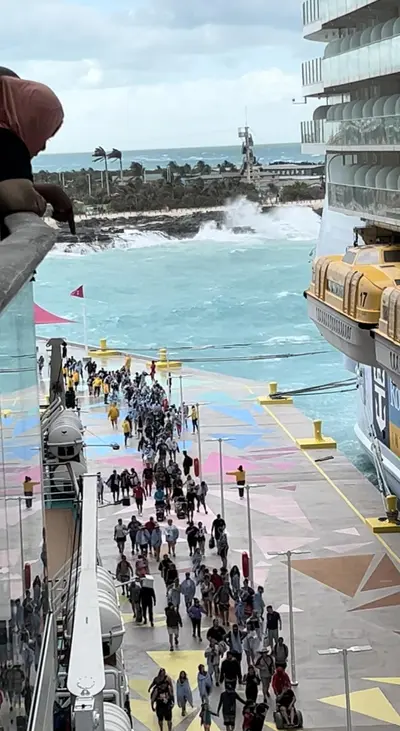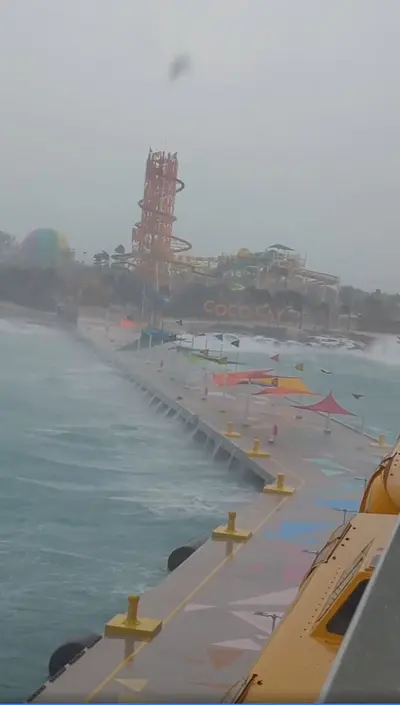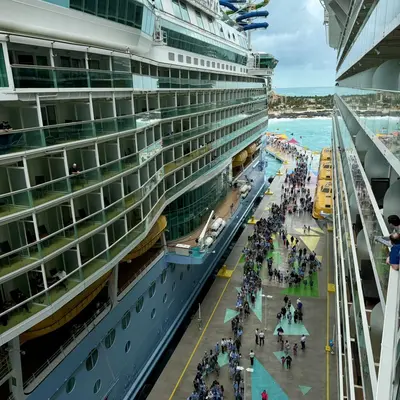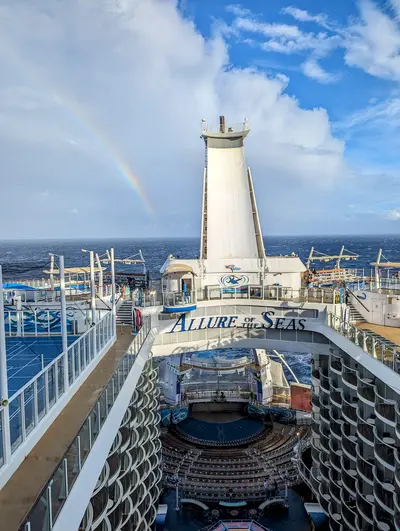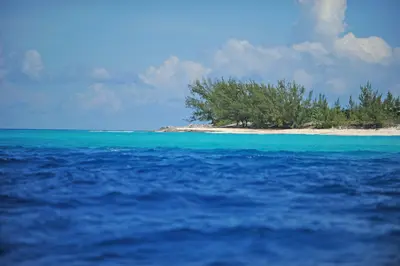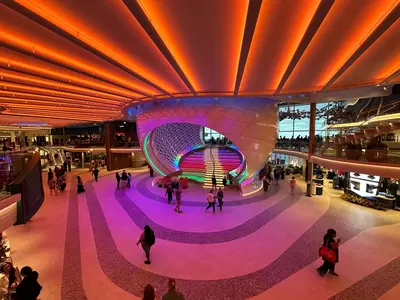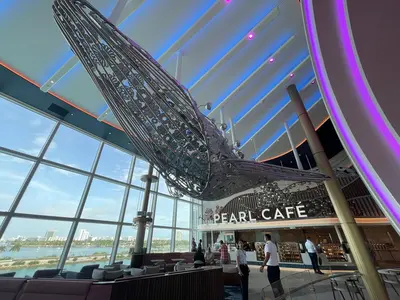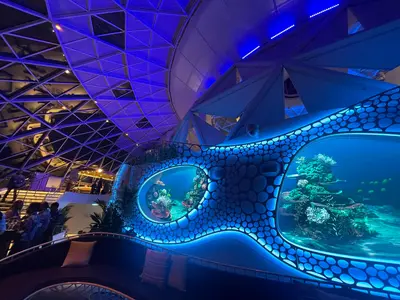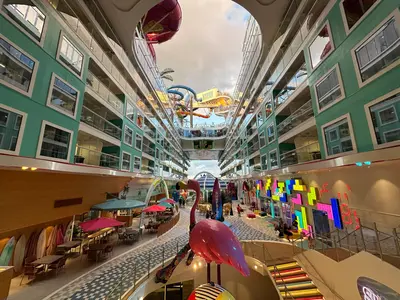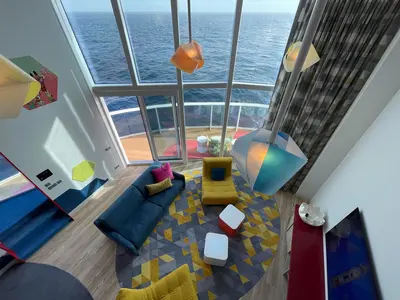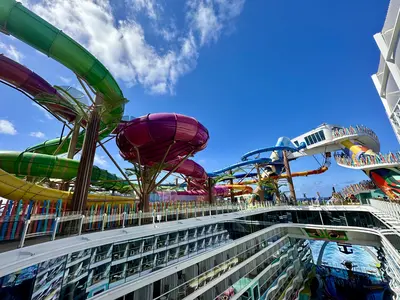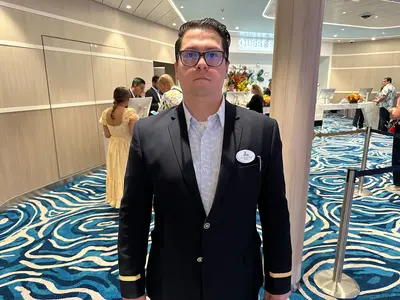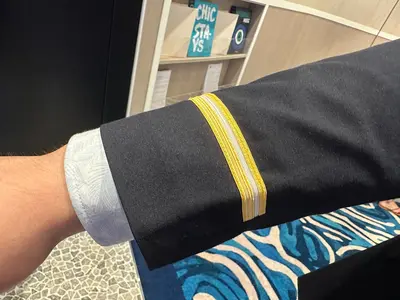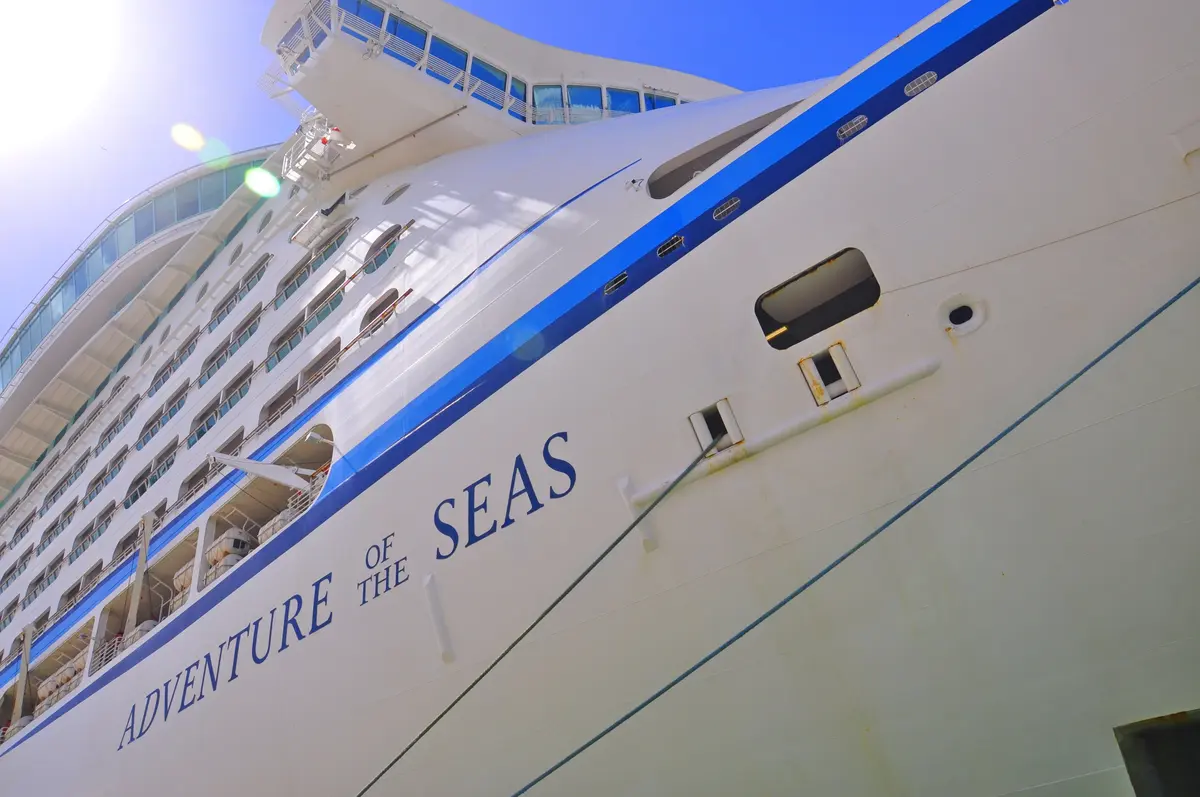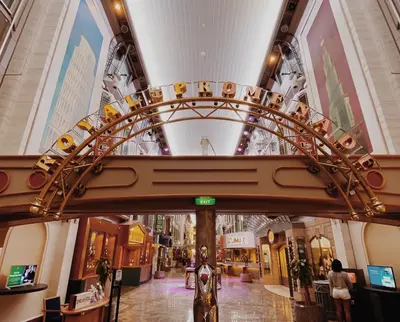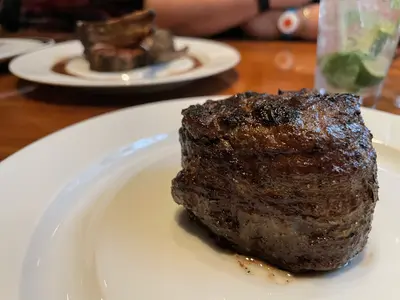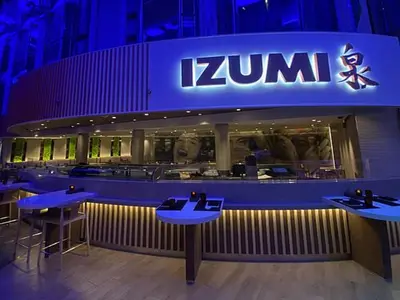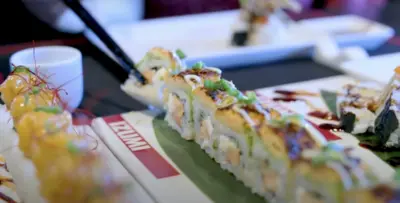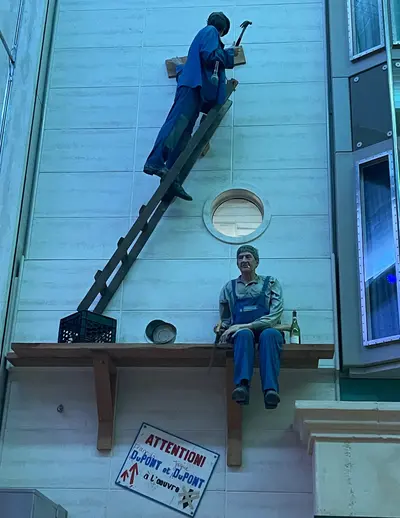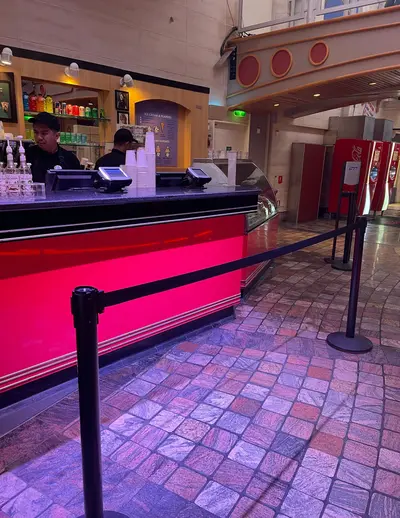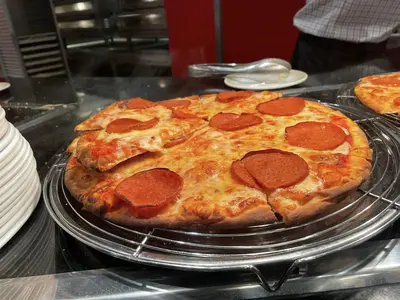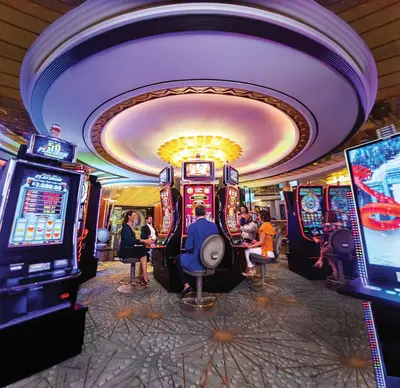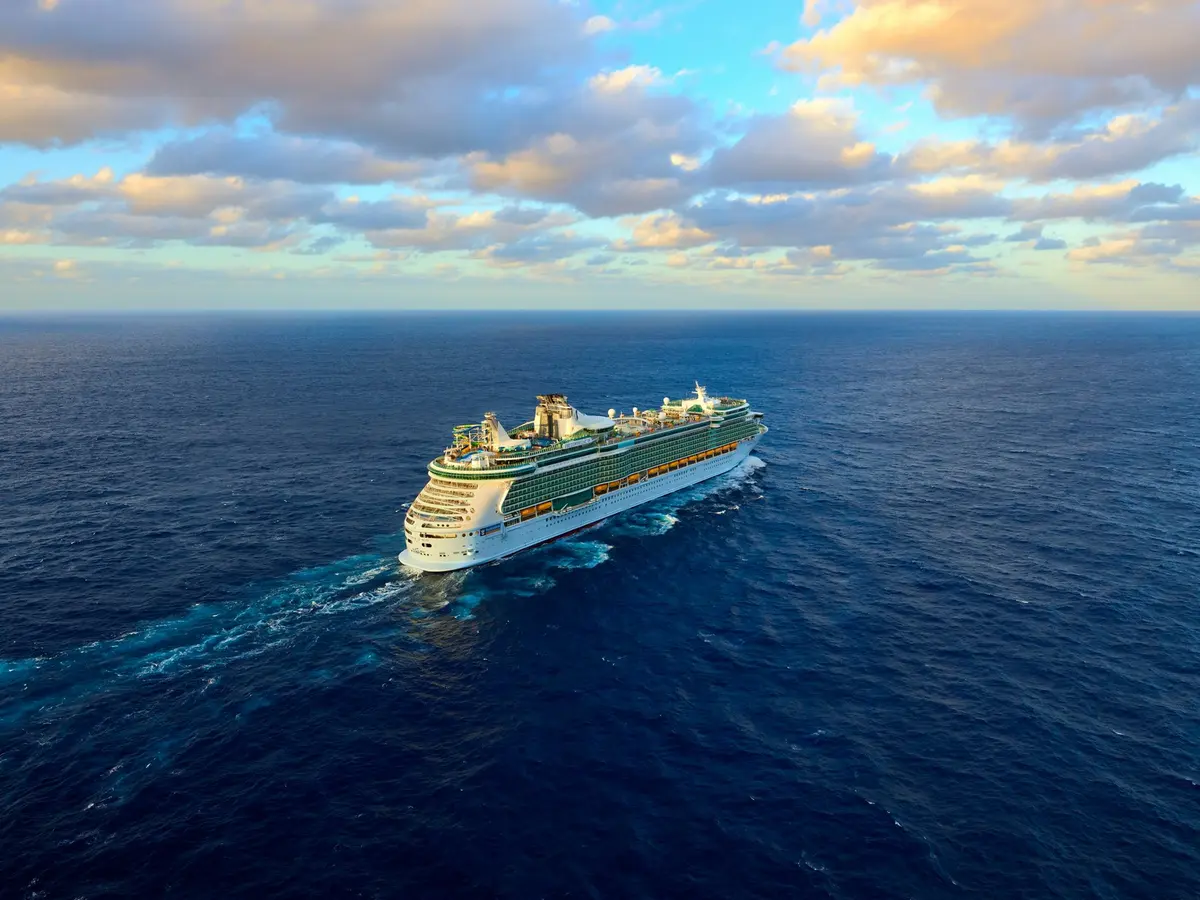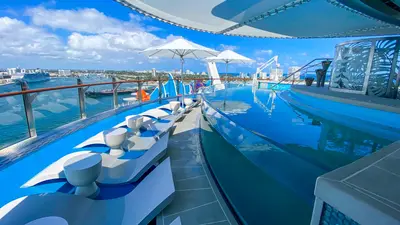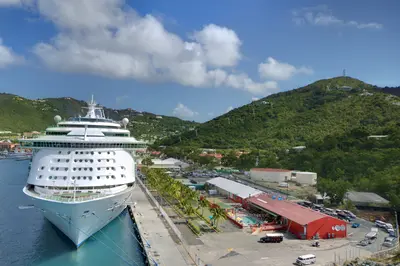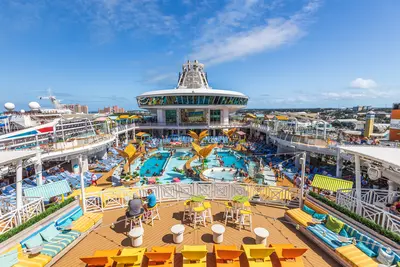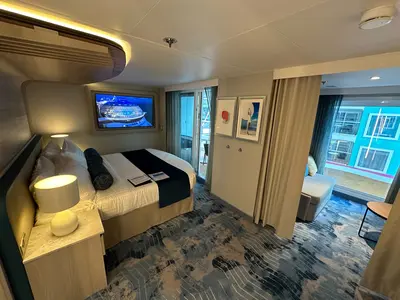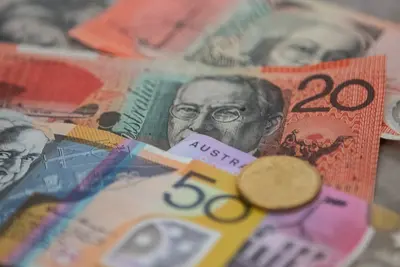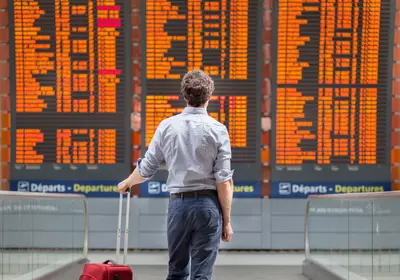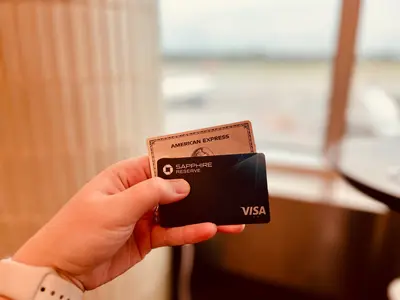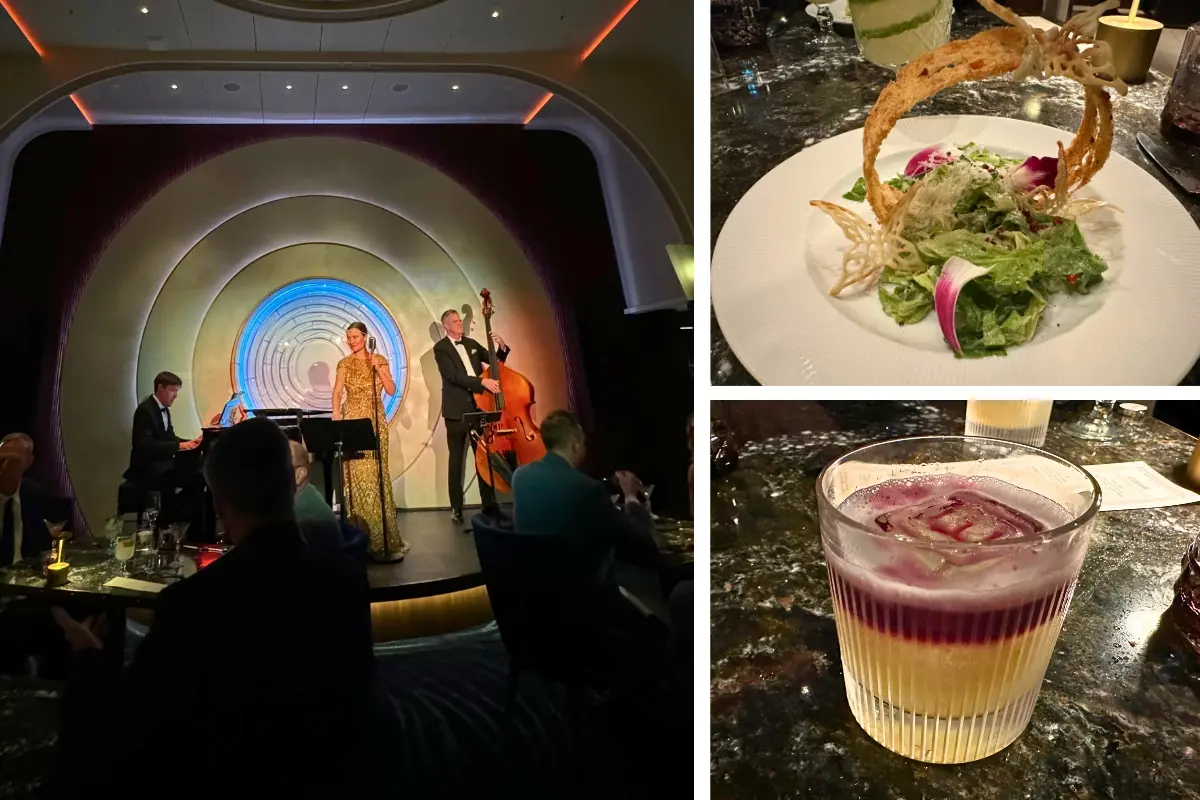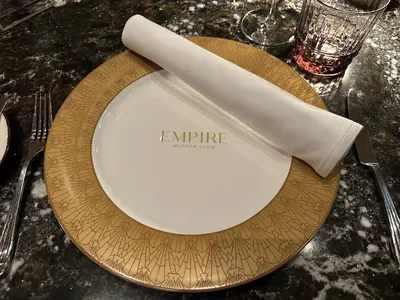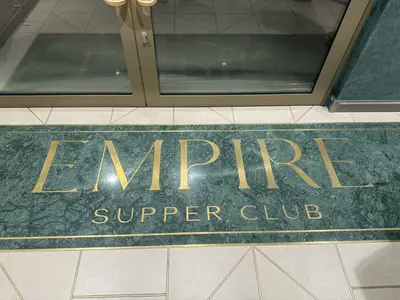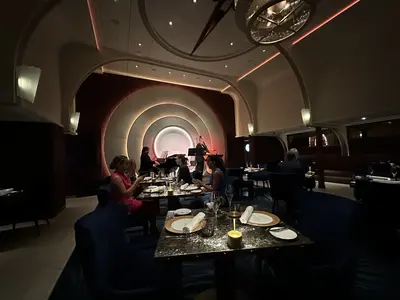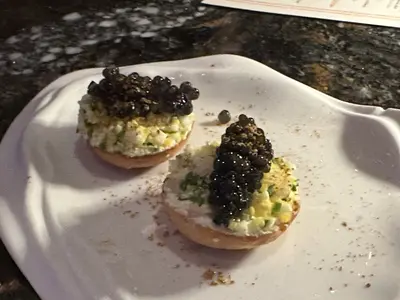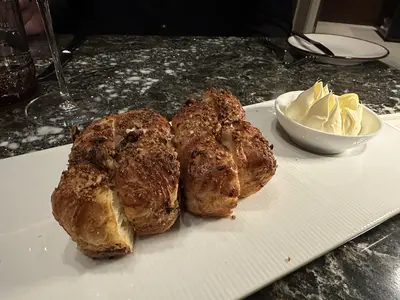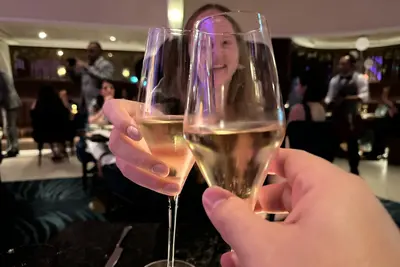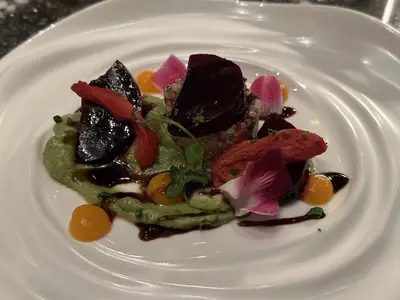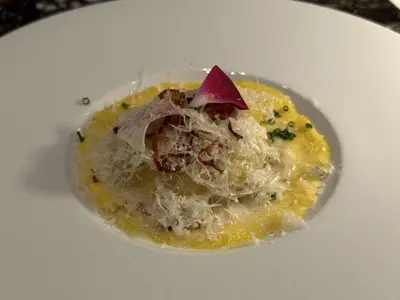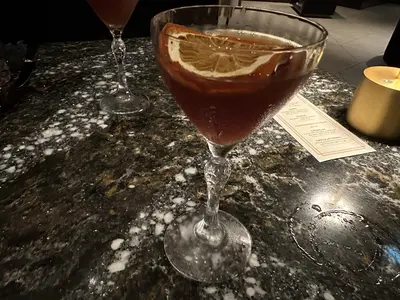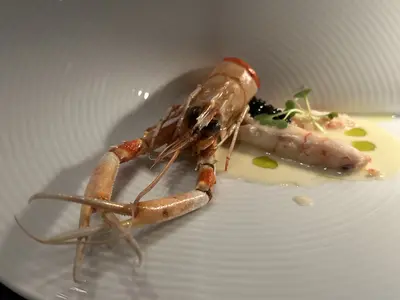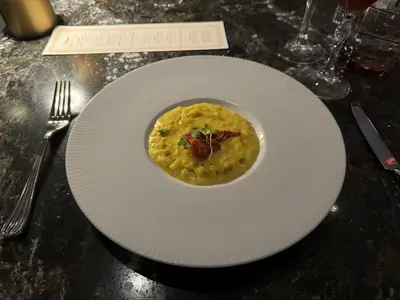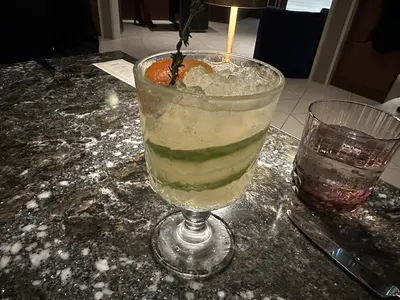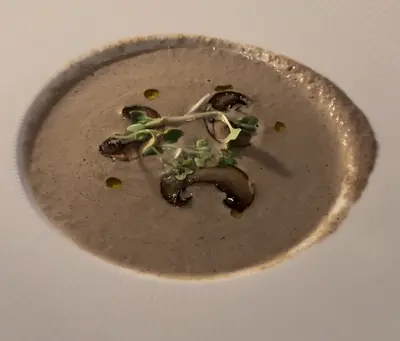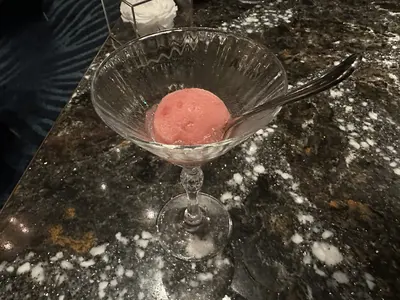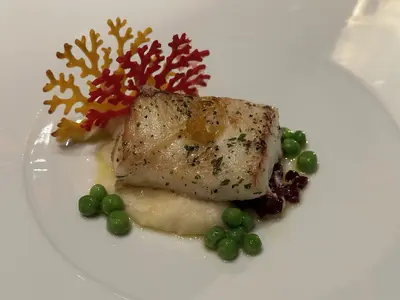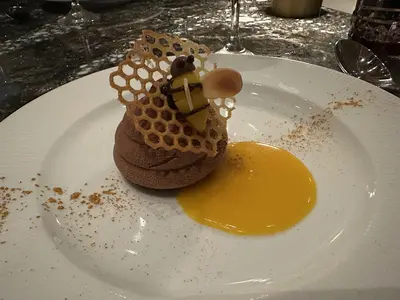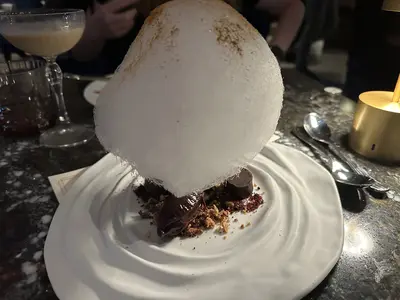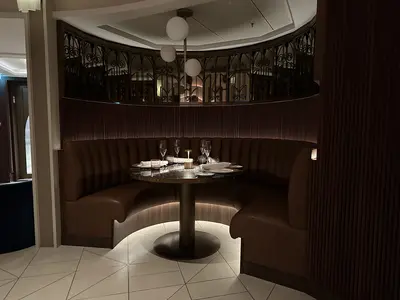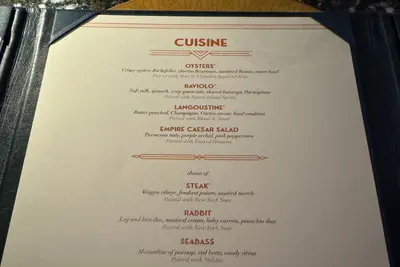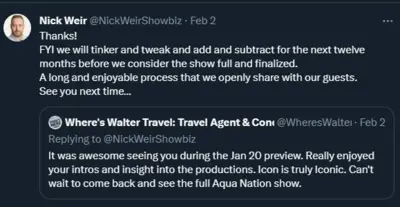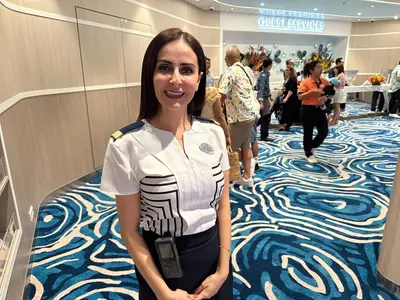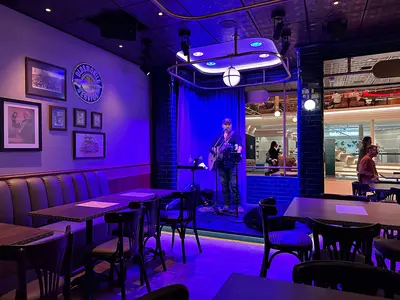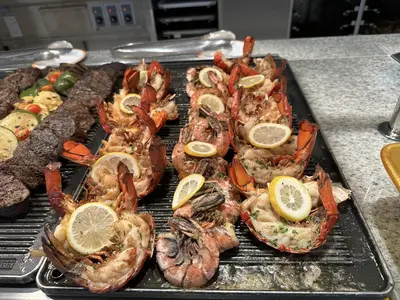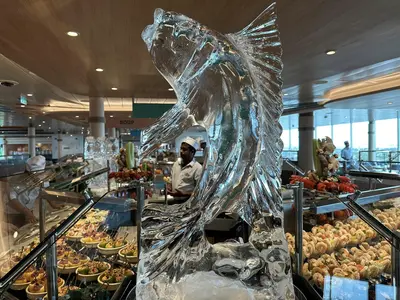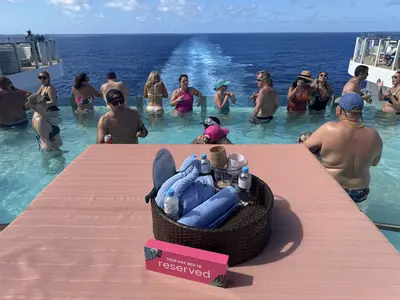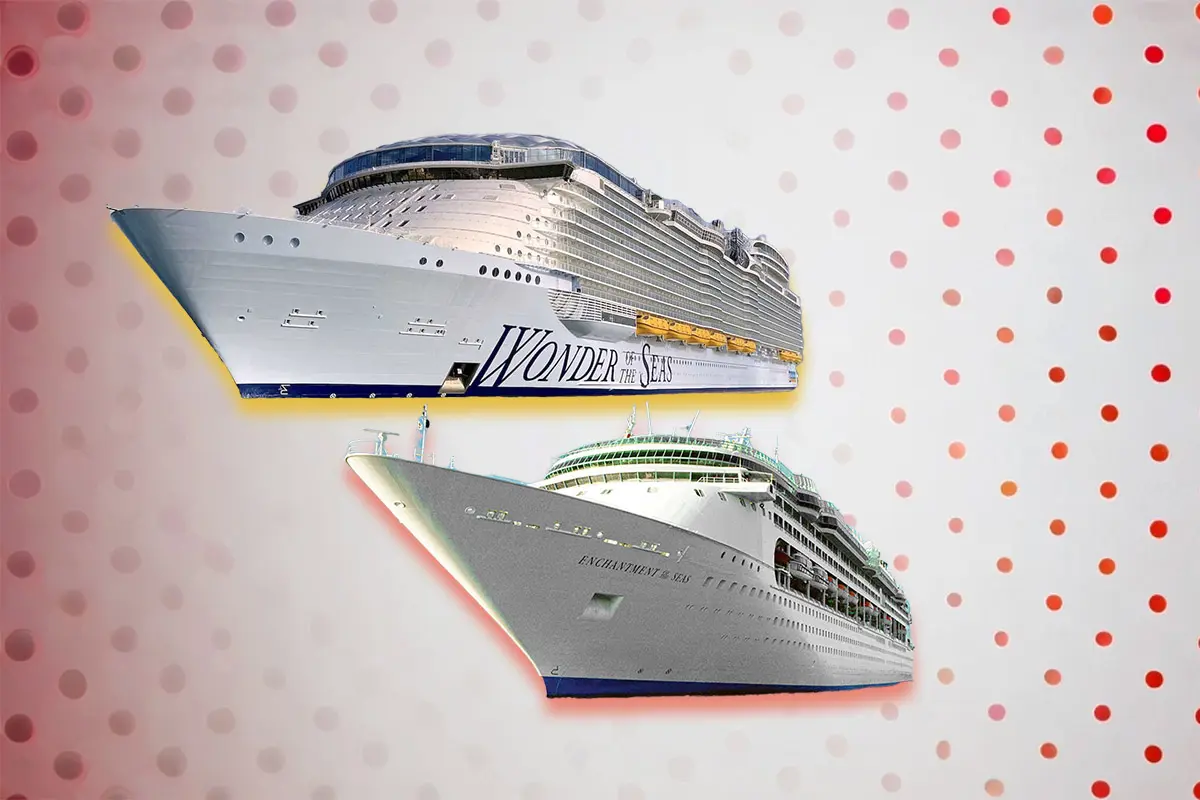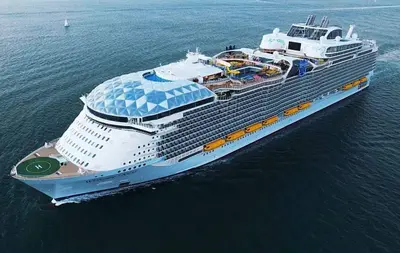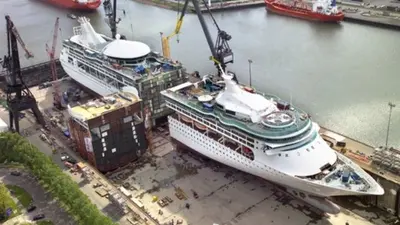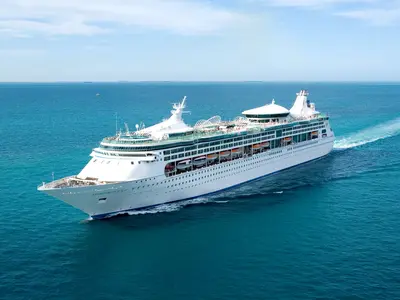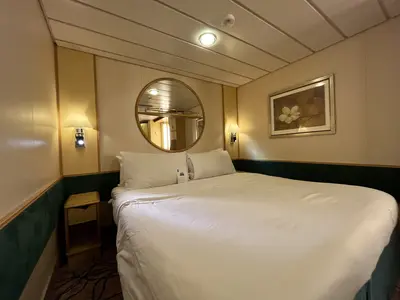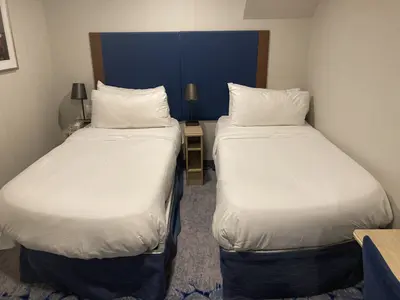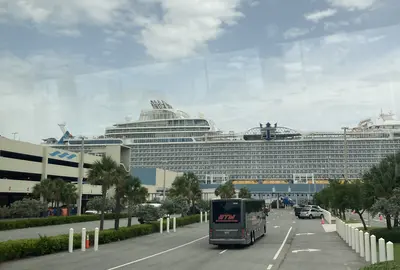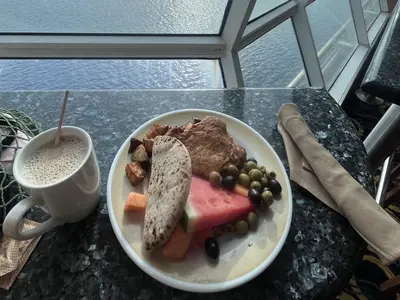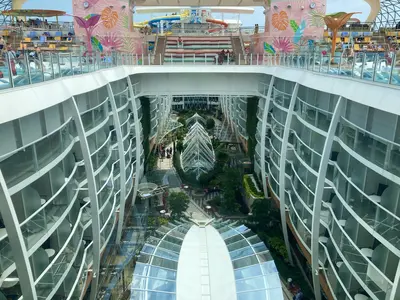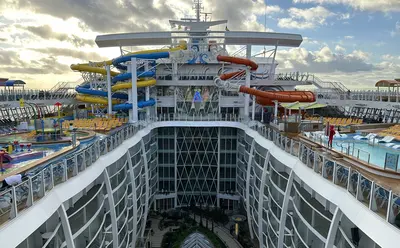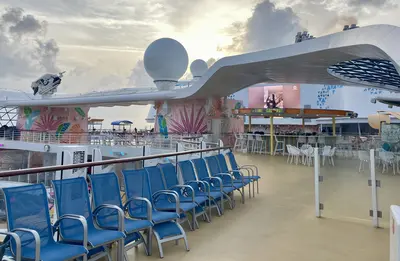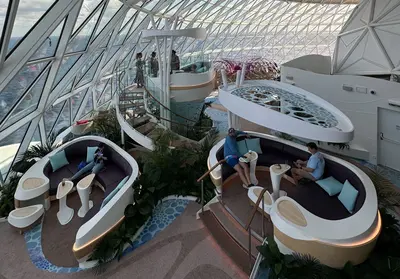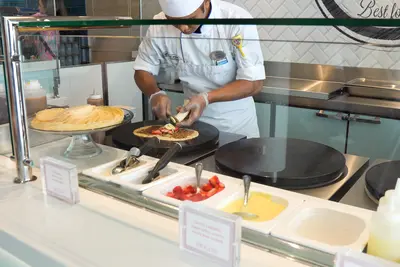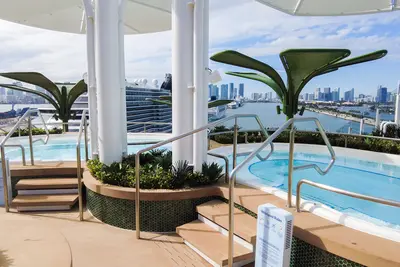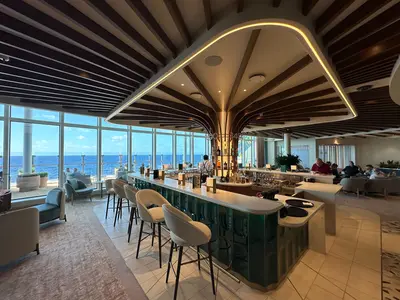How over 6,000 people are served meals every day on the world's largest cruise ship
In:Cruise ships are a lot of mini-cities, including having to feed thousands of people during the course of a voyage.
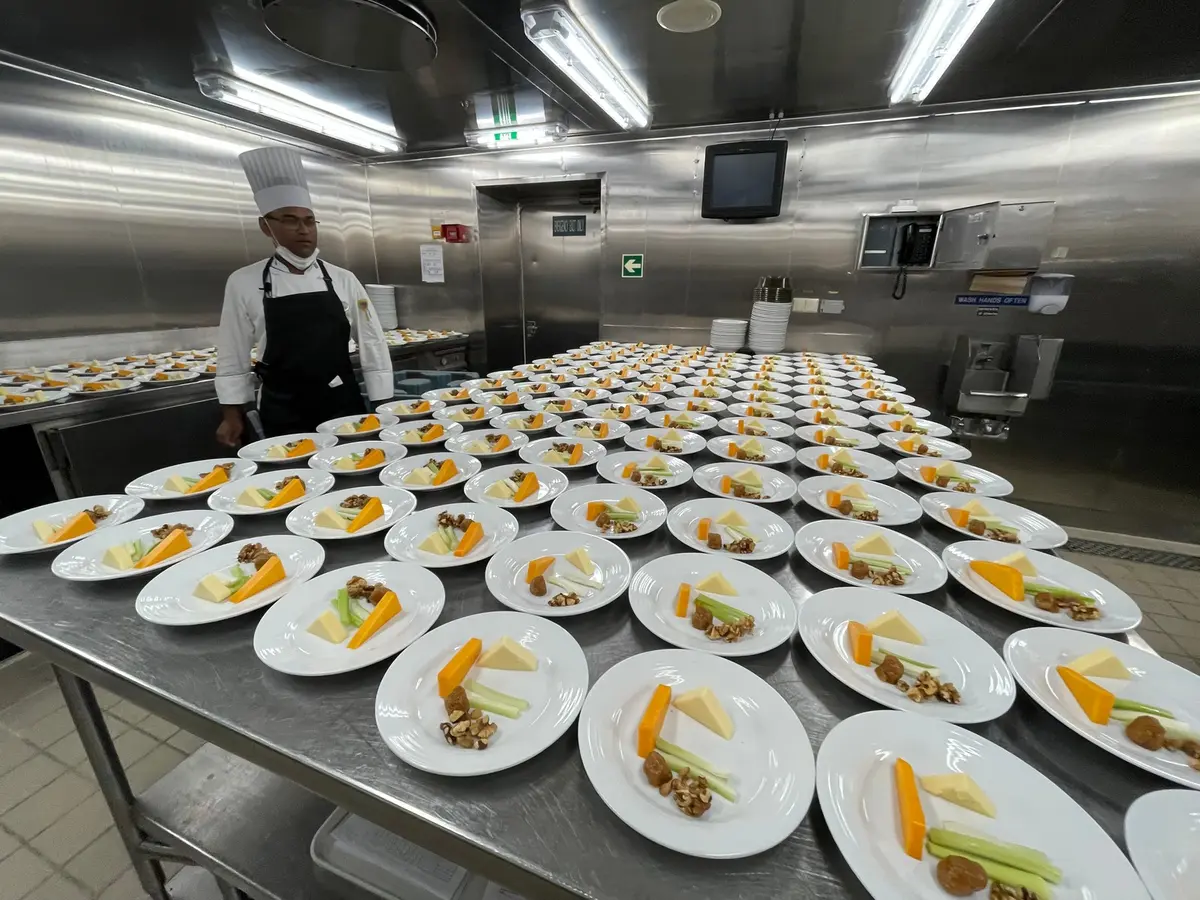
Every week, up to 7,600 people vacation on Royal Caribbean's Icon of the Seas, which holds the title of the world's largest cruise ship. That includes breakfast, lunch, dinner, and snacks in between.
There are 23 total kitchens (referred to as galleys on a cruise ship) to serve 27 restaurants.
At the heart of Icon's meal service is the Main Dining Room, which serves 6,000 guests in a three-and-a-half-hour time frame. There are 425 chefs onboard Icon of the Seas, with 45 people working in the Main Dining Room galley on deck 3 alone.
Supplying, prepping, and serving that many meals every day is not a simple feat. Royal Caribbean has to have enough food so it doesn't run out without over-ordering and wasting food. Then it has to get supplies in place every week, and sometimes the demographics for one sailing may require different amounts of food than another.
All of the ship's food is sourced from the ship's homeport in Miami.
In fact, there's enough food on Icon of the Seas not just for one cruise, but three cruises. The idea is there is enough food on hand in case the ship needs to go in a different direction so there is enough for extra days.
Every week new supplies are brought onboard, but some items may only be sourced every two weeks. Cheeses, herbs, and berries are examples of food that is brought onboard every week because those do not last as long.
Frozen items, such as prime rib or fish, are brought every two or three weeks.
So what happens if they end up running short on one item? The ship can call to headquarters to assist in re-supplying at one of the ports of call the ship is visiting.
The actual food is sourced from all around the world, including locally. Royal Caribbean Vice President Food & Beverage, Linken D'Souza, describes it as a very complex operation, "We are always looking to source local. And so the last couple of years we've shifted a lot of our purchasing very domestically within marketplace."
"Fresh ingredients have always been the case, but now we've really shifted, whether it's here or in Europe and Australia and China, my team goes out and we go out to the marketplace and we'll literally go and match products against our US products and say, okay, what works for us? How do we buy locally?"
All of this isn't cheap to do. Royal Caribbean wouldn't share numbers, but suffice to say, Mr. D'Souza referred to the number as being, "a lot."
"We've got crew members and guests on board. On a full sailing, over 10,000 people on board the ship. We spend a lot of money to make sure we look after the guests from food and beverage standpoint and supplies."
Food is the second highest expense for Royal Caribbean after fuel. According to Royal Caribbean Group's financial disclosures, the company spent $307 million on fuel in the first quarter of 2024.
How much food is brought on a cruise ship?
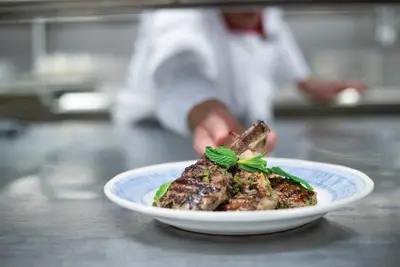
Ever wonder which foods are the most popular on a cruise ship?
Icon of the Seas needs enough food for all of its recipes, as well as food to be available on its own. A tomato can be cut up and served individually or as part of a stew, sauce, or salad.
According to Royal Caribbean's executive chefs, rice, potato, lobster, tenderloin, filet mignon and especially prime rib are the most popular items on Icon of the Seas.
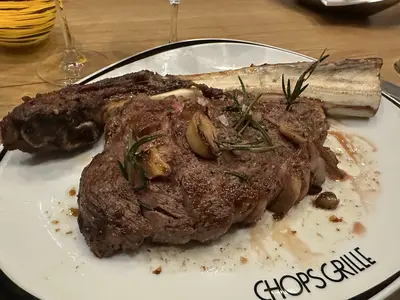
About 20,000 pounds of rice and 2,500 pounds of prime rib are used every cruise.
In an effort to better predict how much food the ship will need, the Food & Beverage team looks at the demographic of who is booked and the guest count for the next sailing. Meaning, if there are more guests from Mexico on a given sailing, the crew will plan to offer more Mexican food onboard.
The exact quantity of food depends on the amount of guests and demographic.
Icon of the Seas has the best kitchens yet
One of the benefits of being a brand new cruise ship is having access to the best of the best, including machinery.
Icon has plenty of guest-facing innovations, and that trend applies to the kitchens too, "If you go to the production areas, the equipment that we've introduced here for the first time, never seen on our ships before," said Mr. D'Souza.
"Things like machines that can take a whole piece of steak, cut it into portions, cut fish into portions, vegetable slicers, things that we just haven't had historically on ship."
These machines replace functions that were traditionally done by hand.
On the upcoming Utopia of the Seas, Mr. D'Souza indicated will have a laser guided water gun that uses high pressure water to cut pieces of cake.
This technology makes the work easier for crew members, and he believes that moves crew members closer to the guest experience and that adds value to the guest experience.
"We're bringing some pretty new and exciting, innovative technology to really take even our back of the house processes up from what we've historically done."
Read more: Icon of the Seas is Royal Caribbean's best cruise ship ever, and it's not even close
The most highly regulated food service operation on the planet
With an operation as large as Icon of the Seas, food safety is paramount to the cruise line.
Mr. D'Souza said cruise ship kitchens are the most regulated food service operation that you'll find, "we are the most highly regulated food service operation on the planet."
The United States Public Health Service has a division known as the Vessel Sanitation Program, which acts as a cooperative activity with the cruise ship industry.
"When we get inspected for food safety, we have 7 to 8 uniformed officers that board the vessel and they do a full inspection top to bottom."
Mr. D'Souza is quite proud of the work his culinary team does and says there's nothing like it at any restaurant near you, "You will never find a restaurant on land that looks like this. Top to bottom, stainless steel, spotless floors, clean. Everything is in order."
"You don't see this on land, because we have very high standards for our guests, and you have very high standards from a government agency body to make sure that we have the highest quality execution, cleanest kitchens, high quality safe food, hand holding equipment, etc."
War on food waste
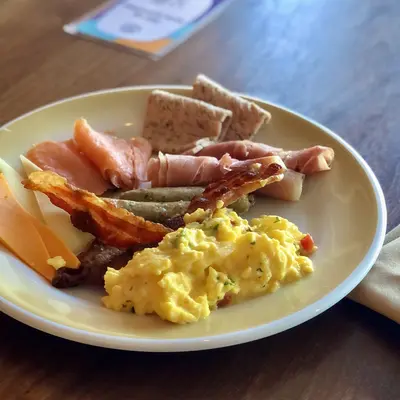
Reducing food waste serves two primary purposes: it ensures there is less food that ends up in a garbage can and it saves Royal Caribbean money.
The cruise line introduced a program called, "Win on Waste", which serves to evaluate food consumption on a cruise ship and make adjustments so there is less food used that doesn't end up consumed.
Royal Caribbean Group has previously announced it will reduce food waste across the fleet by 50% by 2025. In the summer of 2023, Royal Caribbean Group reported it already has been able to achieve a 24% reduction in food waste by focusing on the front end of the food system, which prevents and addresses many of the main causes of food waste, including inventory management and over-preparing.

With this new program, chefs can see what's been produced, consumed, wasted, and even repurposed. It helps give better data to the chefs, so they can understand how to make adjustments for the next production.
Royal Caribbean is actually leveraging AI to take into account unused food scrap weight and predict how much food the ship will need for the next sailing.
Read more: Royal Caribbean's clever idea using AI to get help on the world's largest cruise ship

